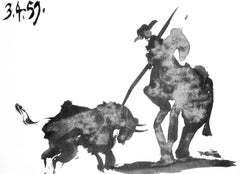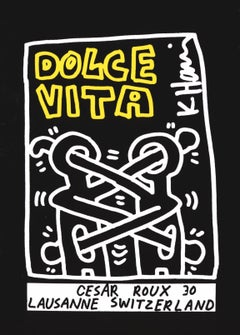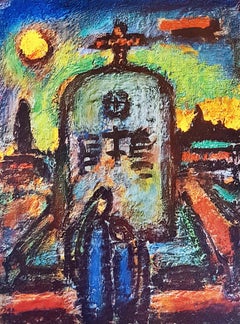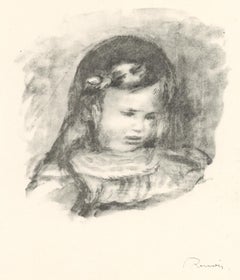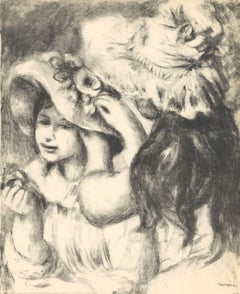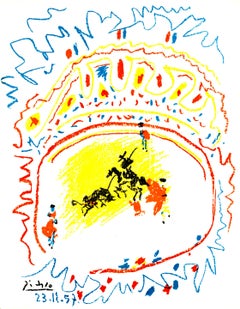New York - Figurative Prints
1960s Cubist New York - Figurative Prints
Lithograph
1990s Pop Art New York - Figurative Prints
Lithograph, Offset
1940s Modern New York - Figurative Prints
Lithograph
1950s Impressionist New York - Figurative Prints
Lithograph
1950s Impressionist New York - Figurative Prints
Lithograph
1970s Cubist New York - Figurative Prints
Lithograph
1990s Contemporary New York - Figurative Prints
Aquatint
1970s Expressionist New York - Figurative Prints
Lithograph
1980s Surrealist New York - Figurative Prints
Lithograph
1950s Surrealist New York - Figurative Prints
Etching, Aquatint
1980s Contemporary New York - Figurative Prints
Lithograph
1970s Pop Art New York - Figurative Prints
Lithograph
2010s Contemporary New York - Figurative Prints
Permanent Marker, Lithograph, Offset
Early 20th Century American Modern New York - Figurative Prints
Handmade Paper, Etching
1910s Cubist New York - Figurative Prints
Woodcut
1980s Pop Art New York - Figurative Prints
Lithograph, Offset
1960s New York - Figurative Prints
Etching, Aquatint
1940s Modern New York - Figurative Prints
Lithograph
1970s Impressionist New York - Figurative Prints
Etching
1990s Modern New York - Figurative Prints
Screen
Mid-19th Century French School New York - Figurative Prints
Laid Paper, Drypoint, Etching
1940s American Modern New York - Figurative Prints
Handmade Paper, Etching
1980s Art Deco New York - Figurative Prints
Lithograph
Early 2000s Photorealist New York - Figurative Prints
Screen
Late 20th Century Abstract Expressionist New York - Figurative Prints
Screen
1960s Modern New York - Figurative Prints
Lithograph
1950s Expressionist New York - Figurative Prints
Lithograph
1960s Pop Art New York - Figurative Prints
Screen
Early 2000s Pop Art New York - Figurative Prints
Screen
1990s Expressionist New York - Figurative Prints
Lithograph
1990s Pop Art New York - Figurative Prints
Lithograph
1990s Pop Art New York - Figurative Prints
Lithograph
21st Century and Contemporary Contemporary New York - Figurative Prints
Aquatint
1980s Pop Art New York - Figurative Prints
Offset
1970s New York - Figurative Prints
Lithograph
1990s New York - Figurative Prints
Lithograph
1970s Pop Art New York - Figurative Prints
Paper, Ink, Mixed Media, Board, Pencil, Lithograph, Offset
1930s Modern New York - Figurative Prints
Lithograph
1960s Modern New York - Figurative Prints
Lithograph
1970s Surrealist New York - Figurative Prints
Etching
1960s Cubist New York - Figurative Prints
Linocut
21st Century and Contemporary Contemporary New York - Figurative Prints
Etching
1980s Conceptual New York - Figurative Prints
ABS, Lithograph
1930s Modern New York - Figurative Prints
Linocut
Early 20th Century Modern New York - Figurative Prints
Watercolor, Etching
Early 2000s Pop Art New York - Figurative Prints
Permanent Marker, Lithograph, Offset
1970s Realist New York - Figurative Prints
Lithograph, Offset
1980s Pop Art New York - Figurative Prints
Screen, Lithograph
1970s Pop Art New York - Figurative Prints
Lithograph
2010s Contemporary New York - Figurative Prints
Archival Pigment
1960s Cubist New York - Figurative Prints
Lithograph
1990s Contemporary New York - Figurative Prints
Lithograph
1970s Pop Art New York - Figurative Prints
Etching
Mid-20th Century Abstract New York - Figurative Prints
Woodcut
1970s Folk Art New York - Figurative Prints
Lithograph
1960s Cubist New York - Figurative Prints
Linocut
2010s Contemporary New York - Figurative Prints
Paper, Inkjet
2010s Contemporary New York - Figurative Prints
Paper, Inkjet
1930s American Modern New York - Figurative Prints
Paper, Screen
1970s Surrealist New York - Figurative Prints
Aquatint, Etching
